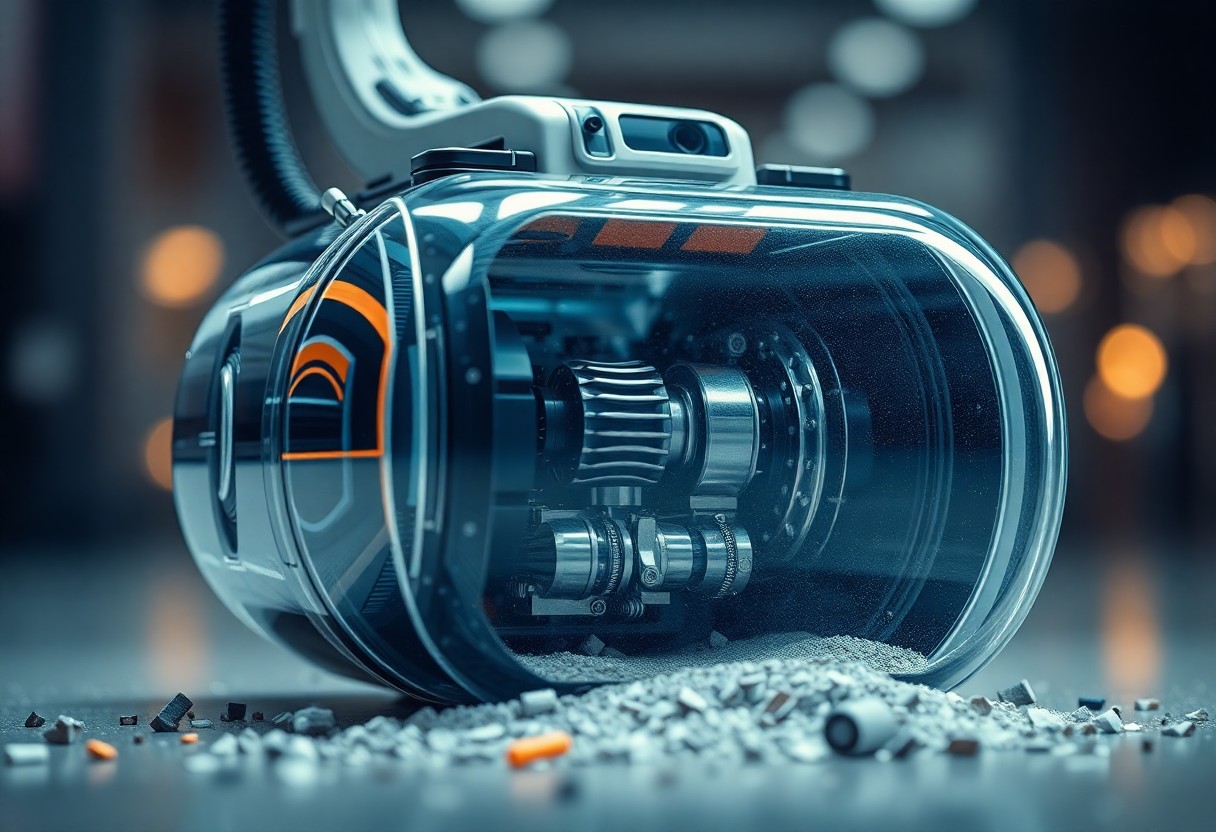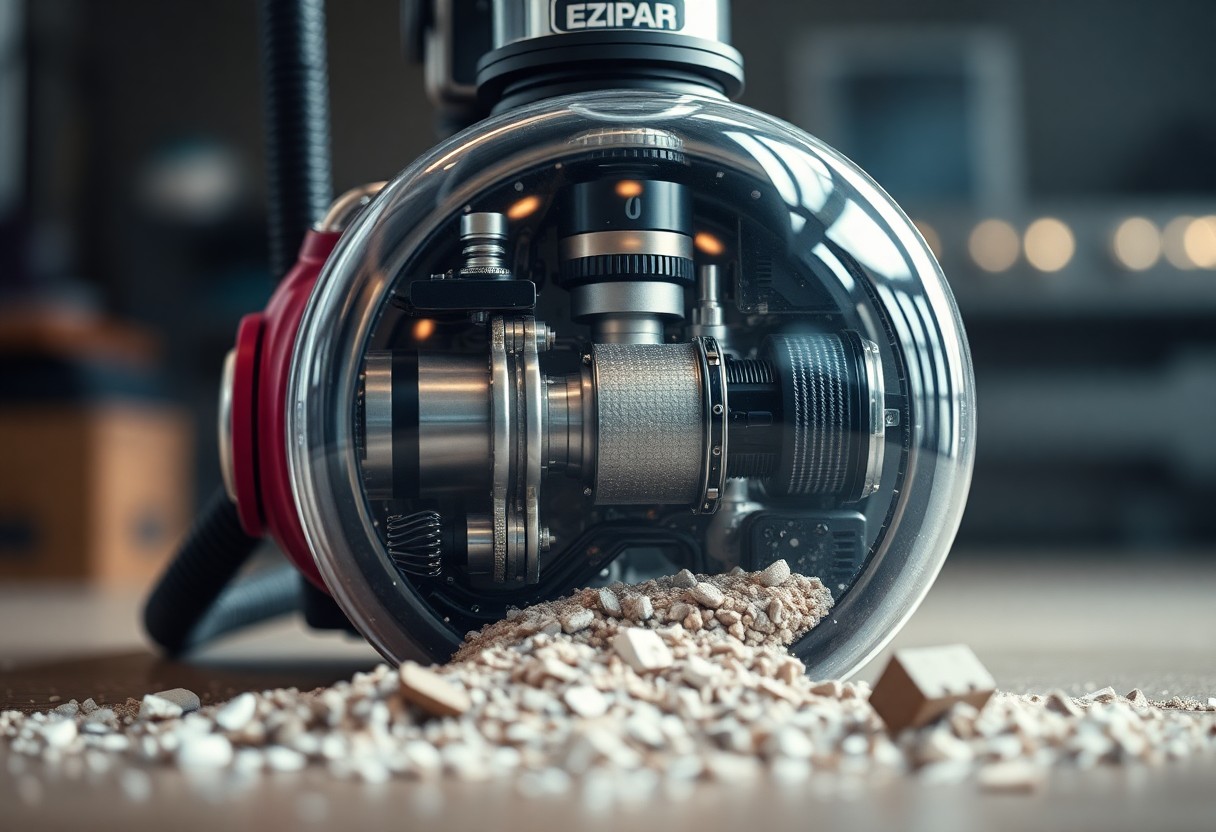There’s a lot more to your vacuum than meets the eye. With advancements in technology, modern vacuums are engineered to tackle dirt and debris with remarkable efficiency. From powerful suction mechanisms to sophisticated filtration systems, understanding these technologies can help you choose the right vacuum for your needs. In this post, we will explore how various innovations work together to enhance cleaning performance and ensure your home remains spotless.
Contents
- The Basics of Vacuum Technology
- Overview of Vacuum Mechanics
- The Role of Suction Power
- Types of Vacuum Cleaners
- Upright vs. Canister
- Robotic and Handheld Vacuums
- Advanced Filtration Systems
- HEPA Filters and Air Quality
- Multi-Cyclonic Separation
- Sensors and Smart Features
- Obstacle Detection and Navigation
- Automatic Adjustments for Surfaces
- Energy Efficiency in Modern Vacuums
- Power Consumption and Eco-Friendly Designs
- Battery Technology in Cordless Models
- Maintenance and Durability
- Long-Term Performance Factors
- Best Practices for Care and Maintenance
- Conclusion
The Basics of Vacuum Technology
For those seeking to understand vacuum technology, it begins with the fundamental principles of air movement and pressure differentials. Vacuums operate on the premise that reducing air pressure inside a chamber can create a powerful force that attracts dirt, dust, and debris. Each component, from the motor to the filtration system, plays a vital role in enhancing the efficiency of this powerful cleaning tool, designed with everyday applications in mind.
Overview of Vacuum Mechanics
Against a backdrop of common cleaning challenges, your vacuum employs integrated mechanics to facilitate effective cleaning. This includes the creation of a low-pressure environment that draws air and particles toward the unit, making it easier for you to maintain cleanliness in your home. The design also features various attachments that enhance the reach and effectiveness of the suction power.
The Role of Suction Power
Below the surface, suction power is a key factor that determines the effectiveness of any vacuum. It refers to the ability of the vacuum to pull in air and debris with enough strength to lift and remove particles from your surfaces. The strength of this suction is influenced by multiple factors, including the vacuum’s design, motor power, and filtration systems.
Even more, the performance of your vacuum can often be optimized by selecting models with specialized features such as adjustable suction settings or enhanced brush styles. These features can significantly impact how well your vacuum generates the force needed to capture various types of debris, from fine dust to larger particles, ensuring your cleaning routine is as efficient as possible.

Types of Vacuum Cleaners
Assuming you are looking to understand the various vacuum cleaner types, it’s important to consider the technology and features each offers. Here’s a quick overview:
- Upright Vacuums
- Canister Vacuums
- Robotic Vacuums
- Handheld Vacuums
- Stick Vacuums
After examining these options, you can select a vacuum that meets your cleaning needs.
| Type | Features |
|---|---|
| Upright | Powerful suction, ideal for carpets |
| Canister | Versatile, great for hard-to-reach areas |
| Robotic | Automated cleaning, smart navigation |
| Handheld | Portability, perfect for quick clean-ups |
| Stick | Lightweight, easy storage |
Upright vs. Canister
For your cleaning tasks, understanding the difference between upright and canister vacuums is important. Upright vacuums are typically more powerful, making them excellent for carpets, while canister models offer versatility, allowing you to maneuver more easily around furniture and tight spaces.
Robotic and Handheld Vacuums
Canister vacuums can complement your collection with robotic and handheld models, which are becoming increasingly popular. Robotic vacuums can autonomously navigate your home, providing a smart solution for busy lifestyles, while handheld vacuums deliver convenience for quick clean-ups in small areas.
Consequently, incorporating robotic and handheld vacuums into your cleaning arsenal enhances your efficiency. Robotics allow you to set schedules and let the machine do the work, perfect for maintaining cleanliness without extra effort. Handheld vacuums are ideal for quick jobs, enabling you to tackle spills and dirt without the need to haul out larger machines.
Advanced Filtration Systems
You will find that advanced filtration systems in vacuums significantly enhance their dirt and dust removal capabilities. These systems ensure that your environment remains clean and free of harmful particles. Key technologies include:
Key Technologies in Advanced Filtration
| Type | Function |
| HEPA Filters | Traps fine particles and allergens |
| Multi-Cyclonic Separation | Improves suction power and efficiency |
HEPA Filters and Air Quality
After recognizing the importance of clean air, HEPA filters become vital in your vacuum cleaner. These filters are designed to capture up to 99.97% of particles as small as 0.3 microns, improving the air quality in your home significantly.
Multi-Cyclonic Separation
At the heart of modern vacuums lies multi-cyclonic separation, which increases the effectiveness of the suction. This technology uses centrifugal force to separate dirt and debris from the airstream.
Consequently, this process ensures that larger particles are captured before they reach the filter, maintaining suction power and extending the life of your vacuum. Thanks to multi-cyclonic separation, you can enjoy optimal cleaning performance without the need to constantly replace or clean filters, allowing you to focus on what matters most—keeping your space clean and healthy.
Sensors and Smart Features
Not all vacuums are created equal; advanced models employ sophisticated sensors and smart features to enhance cleaning efficiency. These technologies can help you manage detritus more effectively. For instance, you can find valuable Tips for vacuuming detritus build up from bottom of sump?. These smart systems adjust to various surfaces, ensuring that your home remains spotless without damaging delicate areas.
Across various terrain, modern vacuums utilize advanced obstacle detection systems to navigate around furniture and other obstacles effortlessly. These sensors allow the vacuum to adjust its path in real time, ensuring comprehensive coverage without you needing to intervene constantly. By doing so, they provide a hassle-free cleaning experience that gives you peace of mind.
Automatic Adjustments for Surfaces
Below the surface of your home, vacuums are engineered to automatically adjust based on the type of flooring they encounter. This feature ensures optimal cleaning performance whether you have carpet, hardwood, or tile.
To illustrate, when transitioning from a plush carpet to a hard surface, your vacuum can alter its suction power and brush roll speed. This adaptability not only maximizes cleaning efficiency but also prevents potential damage to sensitive flooring surfaces. It means less manual adjustment for you and a more thorough clean for your home, tailored to each unique surface type.
Energy Efficiency in Modern Vacuums
Your vacuum’s energy efficiency can significantly impact both your electricity bill and the environment. Manufacturers are increasingly focusing on designs that consume less power while maintaining excellent cleaning performance. By choosing energy-efficient models, you can enjoy powerful suction capabilities without excessive energy drain, ensuring that your cleaning routine is not only effective but also sustainable.
Power Consumption and Eco-Friendly Designs
An eco-friendly vacuum minimizes power consumption through advanced engineering and technology. Many modern vacuums feature energy-saving motors that optimize performance, alongside materials designed for durability and recyclability. These innovations help reduce overall energy usage, making them a smart choice for the environmentally conscious homeowner who seeks to maintain a clean home without taxing the planet.
Battery Technology in Cordless Models
Designs for cordless vacuums have evolved significantly thanks to advancements in battery technology. Today’s cordless models often utilize lithium-ion batteries, which offer higher energy densities and longer runtimes than traditional options. This means you can clean more efficiently without the limitations of a cord, enjoying greater flexibility and ease of use in your cleaning tasks.
Indeed, lithium-ion batteries empower cordless vacuums with the ability to sustain strong suction power and extended operation times. Their lightweight nature enhances portability, allowing you to effortlessly maneuver around your home. Many models also feature quick-charging capabilities, ensuring your vacuum is ready to go whenever you are. Additionally, the longevity of these batteries means less frequent replacements, which contributes to reduced electronic waste and a more sustainable cleaning solution overall.

Maintenance and Durability
Now that you understand the technology behind vacuums, it’s important to consider their maintenance and durability for optimal performance.
Long-Term Performance Factors
Along with understanding how your vacuum works, you should also focus on factors that influence its long-term performance. These include:
- Regular filter changes
- Brush roll upkeep
- Cord management
- Proper storage conditions
The maintenance routine you establish will directly impact the lifespan of your vacuum.
Best Practices for Care and Maintenance
Durability is enhanced when you engage in routine care practices for your vacuum. This includes regular emptying of dust containers and cleaning or replacing filters as needed.
In fact, consistent maintenance steps will keep your vacuum functioning efficiently over time. Some best practices include: regularly inspecting for blockages, cleaning brushes to prevent hair buildup, and storing it in a dry location. Following these tips can significantly extend the life of your vacuum and ensure it operates at peak performance, saving you both time and money in the long run.
Conclusion
Following this, you can appreciate how vacuums employ sophisticated technologies like cyclonic filtration, HEPA filters, and robotic navigation to effectively eliminate detritus from your living space. These advancements ensure that your home remains clean and allergen-free, enhancing your overall comfort. By understanding these technologies, you can make informed decisions about your vacuuming needs and select a model that best meets your requirements.

Leave a Reply